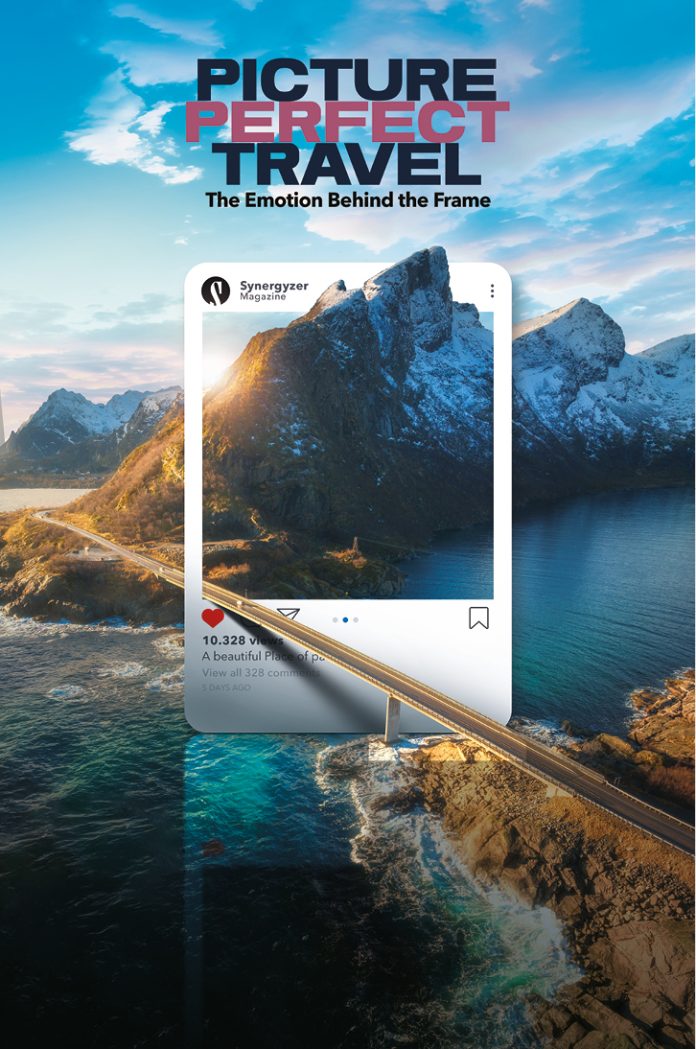Captivating travel photography serves as an indispensable guide for individuals seeking explorative and transformative journeys. It offers a visual narrative that not only captivates the mind with tales of the past but also inspires viewers to discover uncharted territories and the marvels of our world. One of the primary aims of travel photography is to weave a compelling story through your images. This entails crafting a narrative with a series of photographs that illuminate a destination’s culture, its people, and unique features, be it in daily life scenes like cooking, playing, working, or capturing local customs and traditions. In essence, it’s about transforming moments into lasting memories.
Photography, at its core, transcends linguistic boundaries, as noted by the French photographer Bruno Barbey: “Photography is the only language that can be understood anywhere in the world.” It is an art of silent storytelling, conveying tales of diverse cultures and far-flung lands. A single photograph has the power to leave an indelible mark on the viewer’s mind, subtly encouraging them to embark on similar adventures. Consider, for example, the captivating images of Japanese cherry blossoms that capture the true essence of spring. When these delicate blooms are in full splendor, they create a pink, ethereal paradise that beckons one to experience the spectacle in person. Similarly, photographs that document the festivities in Kalash Valley, such as Chilam Joshi, immerse the viewer in the celebratory atmosphere, and the joy of those unfamiliar faces becomes infectious. These photographs offer a glimpse into the unique culture and traditions of the region, attracting enthusiasts from around the world to explore this hidden corner of Pakistan.
Photography serves as a bridge that connects the past to the present, enriching our understanding of history. These photos not only serve as historical documents but also capture the essence of those moments, providing a window into the lives of those who came before us and the events that have shaped the course of history. An iconic example of this power is the photograph of a sailor spontaneously kissing a nurse in Times Square, captured by photographer Alfred Eisenstaedt in 1945, known as “The V-J Day in Times Square.” This image marked the end of World War II and became a symbol of joy and celebration. The photograph transcends its historical context, evoking the feelings of relief and elation that people experienced on that momentous day. It has since become a conduit for emotional connections, making Times Square a symbolic destination for travelers seeking to relive those fleeting moments of joy.
The most captivating travel photography has the ability to transform the ordinary into the extraordinary, shedding light on hidden and underappreciated gems. Consider the work of Alain Schroeder, a dedicated traveler and winner of the Portrait of Humanity award. Among his striking images, one that stands out is a solemn yet heroic portrait of Soon Hwa Kim, a 71-year-old deep-sea diver with six decades of experience. This photograph pays tribute to the resilience of a remarkable woman, a true warrior. Travelers drawn to such imagery seek an authentic experience that goes beyond the glossy pages of travel brochures.
In our current digital age, with the increasing influence of social media, photographers have adapted to this changing landscape. Instead of relying solely on traditional galleries to showcase their work to a select audience, they have embraced the vast potential of digital platforms, making their portfolios accessible to hundreds and thousands of people. In travel photography, timing is paramount, as being in the right place at the right moment can make all the difference. This may require patience, waiting for the opportune instant to capture the perfect shot.
This digital community of influencers and fellow travelers inspires admiration and a desire to be part of their narrative. The constant stream of captivating imagery on platforms like Instagram intensifies the yearning for new horizons and enriching experiences. Take, for example, a photograph that captures the sunrise at Machu Picchu. It not only showcases the breathtaking beauty of misty landscapes but also promises an adventure amid the ancient ruins of the Inca civilization. Each frame has the power to soothe the mind and visually pledges an escape from the mundane, serving as a catalyst that encourages individuals to pack their bags and embark on their own journeys.
Captivating visuals, however, come with a dual responsibility. While they inspire and allure, they must also remain truthful. Photographers and influencers shoulder the responsibility of presenting the authenticity of each destination without misrepresentation. Consider the majestic photographs of melting glaciers in the Arctic; while they are mesmerizing, they also serve as stark reminders of the ongoing global crisis. These images compel travelers to be mindful of their impact and strive to leave behind a positive footprint.
In essence, impactful and captivating travel photography is a visual odyssey, offering us the opportunity to explore the diverse cultures and distant landscapes that make our world rich and vibrant. It operates as a silent storyteller, forging connections with the emotions of curious minds and enticing us to embrace the unknown. These images create an emotional connection between the viewer and the subject, making the transient and fleeting moments eternal in their appeal. Through the lens of travel photography, we embark on journeys of the heart and mind, transcending borders and uniting us in our shared humanity.

